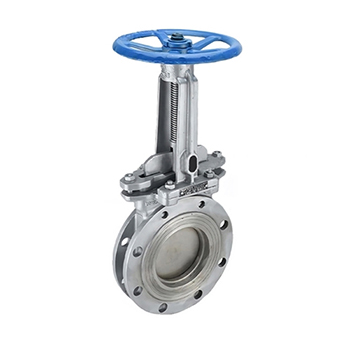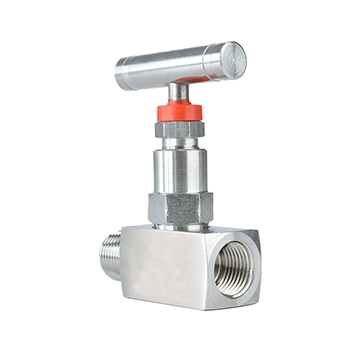Difference between Globe Valve and Gate Valve
Gate valves and globe valves are commonly used valves, but they are also two different valves. When purchasing, we need to distinguish the different characteristics of gate valves and globe valves to ensure later use. Gate valves and globe valves are widely used in our lives, so what is the difference between gate valves and globe valves?
Structure difference
Gate valve: The structure of the gate valve is more complicated than that of the globe valve, and the gate valve is shorter and taller than the globe valve; the sealing surface is different, and the sealing surface of the gate valve is easy to wear when it is opened and closed.
Globe valve: The mechanical wear of the sealing surface is small when the disc of the globe valve is opened.
Working principle difference
Globe valve: When working, its hand wheel and valve stem generally rotate together, and they will rise together. The working principle of the globe valve is to use the stem torque to give a downward pressure to the sealing surface. Relying on the pressure of the valve rod, the sealing surface of the valve disc and the sealing surface of the valve seat fit closely, which can prevent the inflow of the medium or be used to adjust the flow rate of the medium. The opening and closing part of the globe valve is a cylindrical valve disc, the sealing surface is flat or conical, and the valve disc moves linearly along the center line of the fluid.
The globe valve is controlled by a handle that rotates 90 degrees. When the hand wheel turns clockwise, the valve stem moves counterclockwise; and vice versa. Because of this design, the switching torque is reduced to the lowest value, so the operation is labor-saving and the service life is long.
Gate valve: Generally, only the hand wheel will rotate, but the valve stem will not rotate, and it will only move upward. The gate valve is used for a cut-off medium. When fully open, the entire flow is straight through, and the pressure loss of the medium operation is small at this time. Gate valves are generally suitable for working conditions that do not require frequent opening and closing, keep the gate fully open or fully closed, and are not suitable for regulating or throttling. For high-speed flowing media, the gate can cause vibration of the gate when the gate is partially opened, and the vibration may damage the sealing surface of the gate and the valve seat.
Sealing surface difference
Globe valve: The sealing surface is the small trapezoidal side of the valve core. Once the spool falls, it is equivalent to closing the valve.
Gate valve: The sealing effect is not as good as that of the globe valve, and the valve core will not be closed like the globe valve if the valve core falls off.
Performance difference
Globe valve: It can be used for cut-off and flow regulation. The fluid resistance of the globe valve is large, so it is difficult to open and close. The distance between the valve plate and the sealing surface is shorter, and the opening and closing time is also shorter.
Gate valve: There are only two situations of gate valves, which are fully open and fully closed. When fully open, the material flow resistance in the valve body is basically zero, so the opening and closing of the gate valve are very labor-saving, but the sealing surface of the gate valve is far away, and the opening and closing time is longer.
Installation and flow difference
Gate valve: The two-way effect is the same, there is no direction regulation when installing, and the material can flow in both directions. Whether the flow direction of the gate valve is from the top or the bottom, the inflow effect is the same, and there is generally no requirement for the direction of the inlet and outlet.
Globe valve: Globe valves generally have regulations on the direction of the inlet and outlet, and must be installed in the direction indicated by the arrow on the valve body. When installing the globe valve, the medium can generally flow from the top to the bottom of the valve core.
Transmission difference
Gate valve: The gate valve is to turn the hand wheel to make the valve stem move up and down, and the position of the hand wheel itself remains unchanged.
Globe valve: When the globe valve is opened and closed, it is a rising valve stem type, that is to say, when the hand wheel is turned, the hand wheel will rotate and lift along with the valve stem.
Flow resistance difference
Gate valve: Because the gate valve can only be fully opened and fully closed, when it is fully open, the flow channel in the entire pipeline is straight through. When the fluid medium flows through the channel of the valve body, there is no obstruction, and the flow resistance is almost zero. The flow resistance coefficient of ordinary gate valves is about 0.08-0.12.
Globe valve: When the medium of the globe valve flows through the channel of the valve body, the flow direction is from top to bottom, and the resistance of the valve plate is relatively large. The resistance coefficient of ordinary globe valves is about 3.5-4.5.
Maintenance difference
Gate valve: When the gate valve is being maintained and overhauled, the gate valve needs to be disassembled from the pipeline, and the labor cost for maintenance and overhaul is relatively high.
Globe valve: In most cases, its seat and disc can be directly replaced without disassembling the entire valve. Therefore, when the globe valve is used, it is suitable for use in the occasion where the valve and the pipeline are welded together.
Disc structure difference
Globe valve: The valve disc is generally kept parallel to the fluid, and the globe valve generally has no distinction between bright rods and dark rods. In addition, the height of the globe valve will be shorter than that of the gate valve, and the length will be longer than that of the gate valve. When the globe valve is open or closed, it is a rising stem-type valve. In other words, when the hand wheel is rotated, the hand wheel will rotate and lift with the valve stem.
Gate valve: The disc of the gate valve is actually a gate, and it will remain perpendicular to the direction of the fluid. Gate valves generally have bright rods and dark rods. The gate valve rotates the hand wheel to make the valve stem move up and down, but the hand wheel itself does not change, but the flow rate does.
The difference between the globe valve and gate valve is introduced here first, do you understand it? Only by distinguishing the characteristics of the globe valve and the gate valve can normal use in the later stage be guaranteed.



